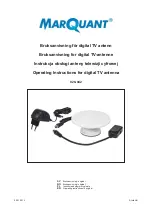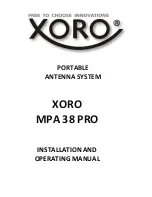
Antenna Installation
Tsunami
®
MultiPoint 10200 Series - Antenna Installation Guide
8
1.2.2 Determining the Optimal Antenna Placement
To achieve the maximum throughput, the outdoor antenna must have clear line-of-sight with the antenna at the other end.
The outdoor antennas are said to have a clear line-of-sight, when there are:
•
No obstacles in the direct path between the antennas (antenna beam)
•
No obstacles within a defined zone around the antenna beam
Although, the radio signal can work well without the clear line-of-sight in urban environments, where the signal is
transported by reflection rather than transporting it directly along the obstacles.
The following figure shows some typical
examples of obstacles you must avoid in urban environments, for the directional antenna to operate effectively.
Figure 1-1 Obstacles to be avoided: (a) Neighbouring Buildings (b) Tall Trees (c) Power Lines
To minimize the signal interference or reflections due to obstacles, note the following guidelines:
•
Mount the antenna as high as possible above the ground to allow maximum clearance.
— In open areas, ‘ground’ is the actual surface of the earth.
— In dense urban areas, ‘ground’ is to be interpreted as the height of the highest obstacle in the signal path
between the two antenna sites.
•
Avoid trees in the signal path to avoid signal absorption due to seasonal changes (leaves or ice).
•
Install the antenna at least 2 m (6 ft.) away from all other antennas.
Other situations in which reflections of the radio signal may cause interference are environments with large reflecting
surfaces, parallel or partly perpendicular to the antenna beam, such as:
•
Mirror-glass buildings.
•
Crowded parking lots.
•
Water surface, moist earth and moist vegetation.
•
Electric power lines and telephone lines above the ground level.
:
Reflective surfaces can be used to improve the performance of a link, if the direct line-of-sight is impaired or absent.
In the absence of a direct path or clear line-of-sight, transporting a signal through reflection depends on two factors:
•
Fresnel Zone
: It is required to calculate the distance of the obstacle from the antenna. See
•
Clearance Factor
: It is required for optimal performance (See
). Ensure that the type and placement
of the antennas leave sufficient clearance of the Fresnel Zone at the maximum width of the bulge, which is typically at
the mid-point between the antennas.









































